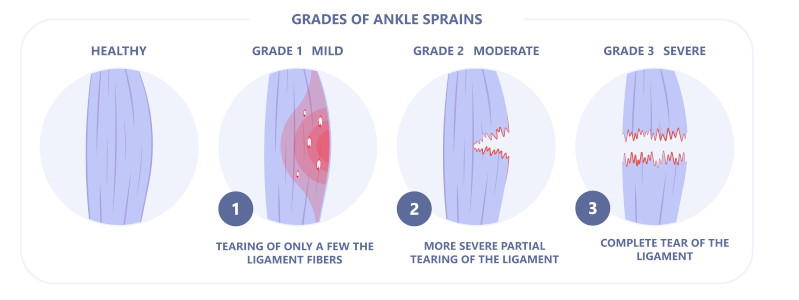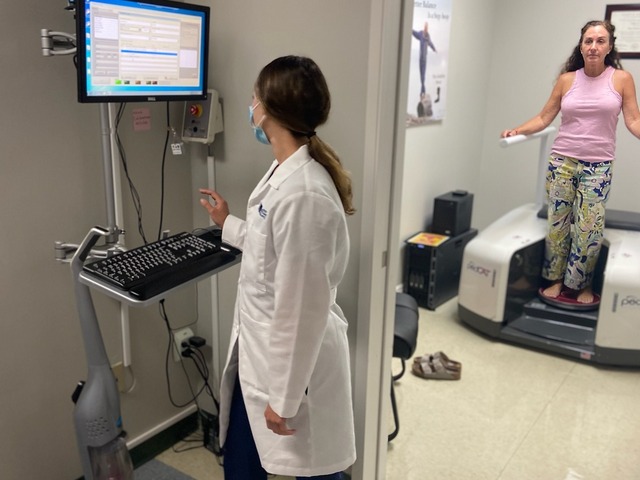
Ankle injuries are common, but when you twist or roll your ankle, how do you know if it’s just a sprain or something more serious, like a fracture? Recognizing the difference between an ankle sprain vs fracture is crucial for proper healing and preventing long-term complications. This is especially important for athletes, including hockey players who face unique challenges with ankle injuries during intense gameplay and training.
How Ankle Injuries Impact Ice Hockey Players
Ice hockey players are particularly susceptible to ankle sprains and fractures due to the high-speed nature of the sport, physical contact, and the demands of skating. The Florida Panthers, currently in an exciting playoff race for 2025, understand firsthand how ankle injuries can sideline key players during crucial moments of the season. Hockey players often experience ankle injuries from:
- Sharp cuts and pivots while skating at high speeds
- Collisions with other players or the boards
- Landing awkwardly after jumps or checks
- Equipment-related incidents, including skate blade cuts
For professional hockey teams like the Florida Panthers, a single ankle injury to a star player can significantly impact their playoff aspirations. The difference between an ankle sprain vs fracture becomes critical when determining whether a player can return to the ice in days, weeks, or months.
Signs of an Ankle Sprain
A sprained ankle happens when the ligaments supporting the ankle joint are stretched or torn. This type of ankle injury often occurs during sports, walking on uneven surfaces, or misstepping off a curb. For hockey players, ankle sprains frequently result from quick directional changes or contact with opponents. Symptoms of an ankle sprain include:
- Swelling and bruising
- Pain, especially when moving the ankle
- Difficulty bearing weight
- Instability in the ankle joint
Mild sprains may heal with rest, ice, compression, and elevation (RICE), while more severe sprains might require physical therapy to restore range of motion. The severity of an ankle sprain is usually categorized into three grades:
Grade 1: Mild stretching of the ligament with minor swelling and tenderness.
Grade 2: Partial tearing of the ligament, leading to moderate pain and swelling, often with difficulty walking.
Grade 3: A complete tear of the ligament, causing severe pain, significant swelling, and instability in the joint.
Ignoring a severe sprain can result in chronic ankle instability, leading to recurrent injuries and long-term discomfort.
Signs of an Ankle Fracture
An ankle fracture occurs when one or more bones in the ankle joint break. Unlike sprains, fractures often result from direct impact, falls, or high-energy trauma. If you’ve injured your ankle and experience any of the following symptoms, a fracture may be likely:
- Severe pain that worsens with movement
- Inability to bear weight
- Visible deformity or misalignment
- A cracking sound at the time of injury
- Numbness or tingling in the foot
Unlike sprains, fractures require medical intervention to ensure the bone heals properly. Some cases may need immobilization with a cast, while severe fractures might require surgery to realign the bone. Fractures can vary in type:
- Stable Fractures: The bones remain aligned and typically heal well with a cast or brace.
- Displaced Fractures: The bones shift out of alignment and may require surgery to set them correctly.
- Open Fractures: The bone breaks through the skin, increasing the risk of infection and requiring immediate surgery.
Advanced Diagnostic Methods for an ankle sprain vs fracture: MRI and PedCAT Technology
When determining ankle sprain vs fracture, accurate diagnosis is essential for proper treatment. While X-rays can identify most fractures, some injuries require more advanced imaging techniques:
MRI Imaging
Magnetic Resonance Imaging (MRI) provides detailed images of soft tissues, ligaments, and cartilage that X-rays cannot detect. MRI is particularly valuable for:
- Identifying ligament tears in severe ankle sprains
- Detecting stress fractures that may not appear on X-rays
- Evaluating cartilage damage
- Assessing soft tissue injuries in complex cases
PedCAT Weight-Bearing CT Technology
At Certified Foot and Ankle Specialists, we utilize the revolutionary PedCAT machine, which provides 3D weight-bearing CT scans of the foot and ankle. This advanced diagnostic tool offers several advantages over traditional imaging:
- Weight-bearing analysis: Unlike traditional CT scans performed lying down, the PedCAT allows patients to stand naturally, providing a more accurate picture of how the ankle functions under normal weight-bearing conditions
- 3D visualization: Detailed three-dimensional images help identify subtle fractures and bone alignment issues that might be missed with standard X-rays
- Comprehensive assessment: The PedCAT can detect complex fracture patterns and joint relationships crucial for determining the difference between ankle sprain vs fracture
- Treatment planning: Superior imaging quality allows for more precise surgical planning when needed
The PedCAT technology is particularly beneficial for hockey players and athletes who need detailed analysis of their ankle injuries to make informed decisions about return-to-play timelines.
When to Seek Medical Attention
If you’re unsure whether you have a sprain or a fracture, a medical evaluation is essential. Physical exams and imaging tests, including X-rays, MRI, and advanced PedCAT scans, can determine the severity of your injury. Ignoring symptoms or assuming it’s “just a sprain” can lead to improper healing and long-term joint issues.
Delaying medical care can result in complications such as arthritis, chronic pain, and decreased mobility. If your ankle remains swollen and painful after a few days of at-home treatment, or if you notice worsening symptoms, it’s time to see a specialist.
Treatment Options and Recovery For An Ankle Sprain Vs Fracture
Both sprains and fractures need proper care for full recovery. Understanding the ankle sprain vs fracture distinction helps determine the appropriate treatment approach. Mild sprains can often heal with rest, ice, compression, and elevation, while more severe sprains may benefit from physical therapy. A broken ankle, on the other hand, requires more structured treatment. Depending on the severity, it may need a cast, boot, or even surgery to ensure the bone heals properly.
Rehabilitation plays a vital role in recovery. After immobilization, physical therapy helps restore strength, flexibility, and balance, preventing future injuries. For both sprains and fractures, returning to activity too soon can lead to reinjury or long-term problems, so it’s essential to follow your doctor’s recommendations.
For hockey players like those on the Florida Panthers roster, specialized rehabilitation programs focus on sport-specific movements, skating mechanics, and gradual return to ice time to ensure safe participation in their playoff race.
Conclusion: Don’t Ignore Your Ankle Injury
Whether you’re dealing with an ankle sprain vs fracture, prompt treatment is essential for a smooth recovery. If you’ve injured your ankle and are struggling to bear weight or experiencing persistent pain, don’t wait. Seek medical attention at Certified Foot and Ankle Specialists to get the right diagnosis and treatment options.
Our advanced diagnostic capabilities, including MRI and the state-of-the-art PedCAT weight-bearing CT system, ensure accurate assessment of your ankle sprain vs fracture. Just as the Florida Panthers rely on precise medical care to keep their players healthy during their 2025 playoff race, you can trust our expertise to get you back on your feet.
Schedule an appointment today to ensure your ankle heals properly and you regain full mobility.

















